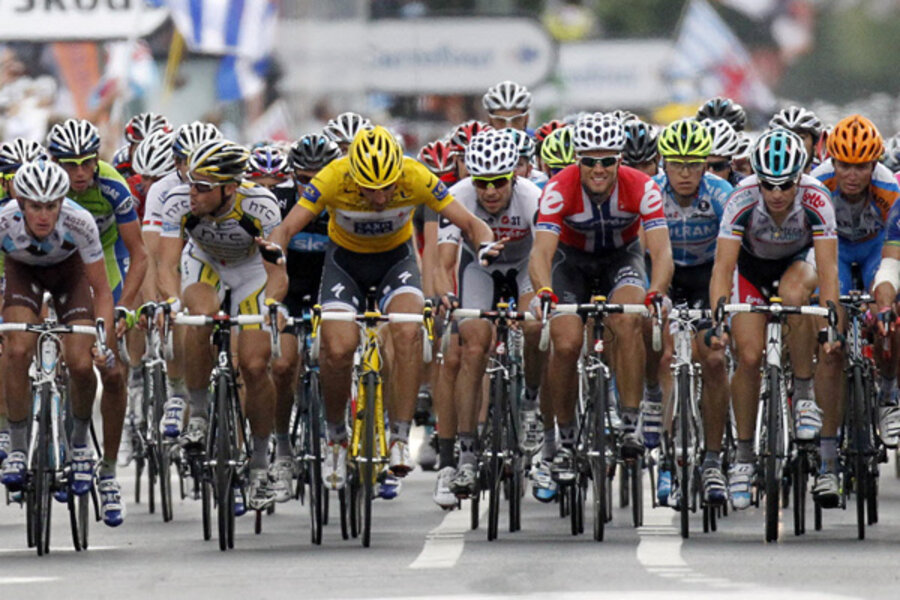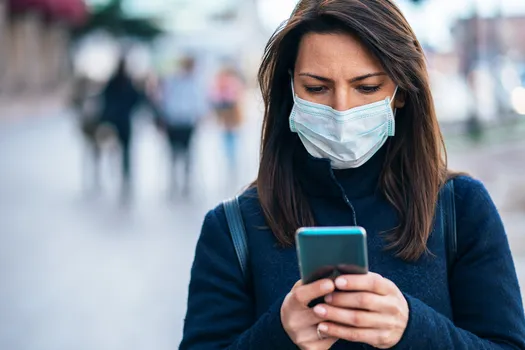To Mask Or Not To Mask : That Is The Question
"Part of the problem is the data [about outside transmission] is hard to find.""Nobody has linked a transmission case to walking or running by someone outdoors.""Cycling in a peloton (the main group of cyclists in a race] for an hour seems like a bad idea without a mask.""Most surfaces [like playgrounds and sport equipment] will sterilize themselves with time."Steven Rogak, mechanical engineering professor, University of British Columbia, aerosol expert
 |
| Peloton, Christian Science Monitor |
"You can still transmit outdoors, you just really have to work at it.""Put a mask in your pocket, and when in doubt, take more precautions than fewer."Matthew Oughton, attending physician, Division of Infectious Diseases, Jewish General Hospital, Montreal
Above all, use common sense matched with what you have read, heard and observed. When you see your neighbour mowing his lawn while wearing a mask, say nothing, but be aware that the neighbour is exercising extraordinary caution through an abysmal ignorance of what the chances might be when someone is in social isolation tending an outdoor task with no potential to come in close contact with anyone else.
Dr. Rogak, as a professor of mechanical engineering, is as well expert in the study of aerosols, and this is how viruses and minuscule particulate matter move through the air. As for scientific certainty about how susceptible anyone can be to contagion while outdoors; walking on a street, hiking on a trail, solo bicycling, mowing their lawn or any number of brief and mostly solitary occupations, there is none. There is, however, ample speculation. As well as observation, and a sense of practical conclusions.
There have been scant few studies undertaken of how the SARS-CoV-2 virus spreads in an outdoor arena. Conclusions reached appear limited by the fact that it becomes difficult to isolate outdoor ventures in a study subject linked to an out-of-door environment when everyone spends so much time indoors. How to separate indoor from outdoor transmissibility opportunities?
 |
| WebMD |
The risk of transmission is amplified with time spent indoors, so tracing infection to periods spent in an outdoor environment, separating it from the greater amount of time indoors is a practical impossibility. Some estimates consider less than 10 percent transmission of COVID occurs in the out-of-doors, but this number is questioned routinely reflecting an inability to unequivocally reach the opinion that study subjects were outdoors when infected.
It remains impossible to claim no risk of the virus being spread outdoors even as some experts agree it is unlikely that two unmasked individuals passing on the street contribute to the growing numbers of positive tests. A jogger passing a group of walkers is similarly unlikely to be a source of viral transmission; the encounter too brief, a viral load readily dissipated in the atmosphere. Length of close contact and proximity do increase risk of virus transmission, however.
Someone seated at a picnic table with friends, crowds all about, enjoying a leisurely opportunity to be together, or being together on an outdoor terrace for lunch with people who don't live at the same address, would indicate the usefulness of being masked. Inconsistent messaging, points out Dr.Oughton with respect to when wearing a mask is advisable outdoors, can confuse people. He points out that risk levels are not equal across all populations and communities.
Those communities known to have high rates of transmission along with positive cases, add in a medical system struggling to maintain its integrity with growing numbers of COVID-19 patients requiring hospitalization, along with population density, and there's a growing case for mask-wearing in public. In circumstances such as these, a one-size-fits-all protocol simply is inappropriate. It's where awareness and commonsense intersect.
Decisions on outdoor mask wearing, both Doctors Oughton and Rogak agree, is a matter of risk evaluation. Working out singly, walking, cycling, running, hiking sees no need for mask-wearing. On the other hand, exercising or socializing in close proximity with others outside one's family unit does equate with a sensible choice of mask-wearing.
In addition, odds are quite low with respect to virus transmission through sports equipment and outdoor gyms.There is agreement among scientists of the unlikelihood of transmission from hard surfaces. On the other hand, a growing understanding has developed that the SARS-CoV-2 virus spreads directly from person-to-person,through respiratory droplets or aerosols lingering in poorly ventilated indoor spaces.
 |
| A woman wears a face mask as she walks along a street in Montreal, as the COVID-19 pandemic continues in Canada and around the world. THE CANADIAN PRESS/Graham Hughes |
Labels: COVID-19, Outdoor Masking

0 Comments:
Post a Comment
<< Home